- 04/07/2021
- 5 Min Read
- By: Christian Schaefer
How To Replace BMW F30 M-Sport Front Brake Pads & Rotors
BMW's M-Sport package allows 3-series owners to experience some of the capabilities of an M3. The package equips your BMW with a lower and firmer suspension, more aggressive front and rear bumpers, a smaller steering wheel, sportier seats, and fixed piston, Brembo brake calipers. The yellow Brembos are a significant upgrade over the stock sliders. They use a bigger rotor and pad for more stopping power and greater heat tolerance. The calipers use four pistons rather than one and are made from aluminum, making them lighter than the standard caliper. All of those options make the M-sport package vehicles better suited for autocross, track days, and spirited driving.
The upgrade to the M-Sport brakes changes the brake service procedure. The fixed piston style of caliper used by Brembo uses a different method than the standard sliding calipers. However, the difference in pad and rotor replacement over the standard brakes doesn't add any complexity or difficulty to the job. This is still a standard brake service you can easily do in your driveway with hand tools.
BMW models and years applicable:
- F30/F31/F34 BMW 3-Series with M-Sport Package
- F32/F33/F36 BMW 4-Series with M-Sport Package
- F22/F23 BMW 2-Series with M-Sport Package
Symptoms of worn BMW F30 front brake pads and rotors:
- A grinding coming from the front, under braking
- Juddering or a vibration coming from the front, under braking
- Deep grooves on the rotor surface
- Dark-colored deposits on the rotor surface
- The vehicle's steering pulling to one side, under braking
All disc brake systems have a front bias, meaning that the front brakes do most of the braking. Their increased braking responsibility will lead to more frequent replacement intervals when compared to the rears. However, driving with excessively worn rear brakes still creates reduced stopping ability.
Once the brake pad material is completely worn away, the pad's metal backing plates are forced against the rotor, destroying it. You'll hear an intense grinding noise under braking when this happens. Additionally, metal shavings will come off of the rotors and cover your wheels. If these shavings get wet, they'll coat your wheel in rust.
How long will it take to service the front brakes on your BMW F30?
Replacing the pads and rotors is a straightforward process that doesn't require removing and reinstalling too many parts. This part of the job should take 30 minutes per corner.
To completely service the brakes, you'll need to flush the brake fluid as well. Having a pressure bleeder simplifies this process and significantly speeds it up. If you don't have a pressure bleeder, you'll need another person to help you out. Either way, bleeding the brakes shouldn't take longer than 20 minutes.
What will it cost to service the front brakes on a BMW F30?
How much you spend on your brake service is up to you. Follow the link below, and you'll see that we offer several kits for the M-Sport brakes. The cheapest option we offer is purely for street applications and features Zimmerman rotors and Akebono pads. This option will run you just over $200. At the other end, you have genuine BMW replacements for a smidge under $800. That gets you OEM pads and the OEM drilled and slotted rotors. No matter which option you choose, they all come with new pad wear sensors.
Parts required to service the front brakes on a BMW F30:
Tools required to service the front brakes on your BMW F30:
- Caliper Piston Compressor
- 17mm Socket
- 18mm Socket
- 6mm Hex Bit Socket
- 8mm Hex Bit Socket
- E16 Socket
- Ratchets
- Torque Wrench
- Flathead Screwdriver
- Hammer
Steps required to service the front brakes on your BMW F30:
Step 1: Remove the old brake pads
Jack up the front of the car and place it onto jack stands. Then, use a 17mm socket to remove the lug bolts so you can remove the wheel.
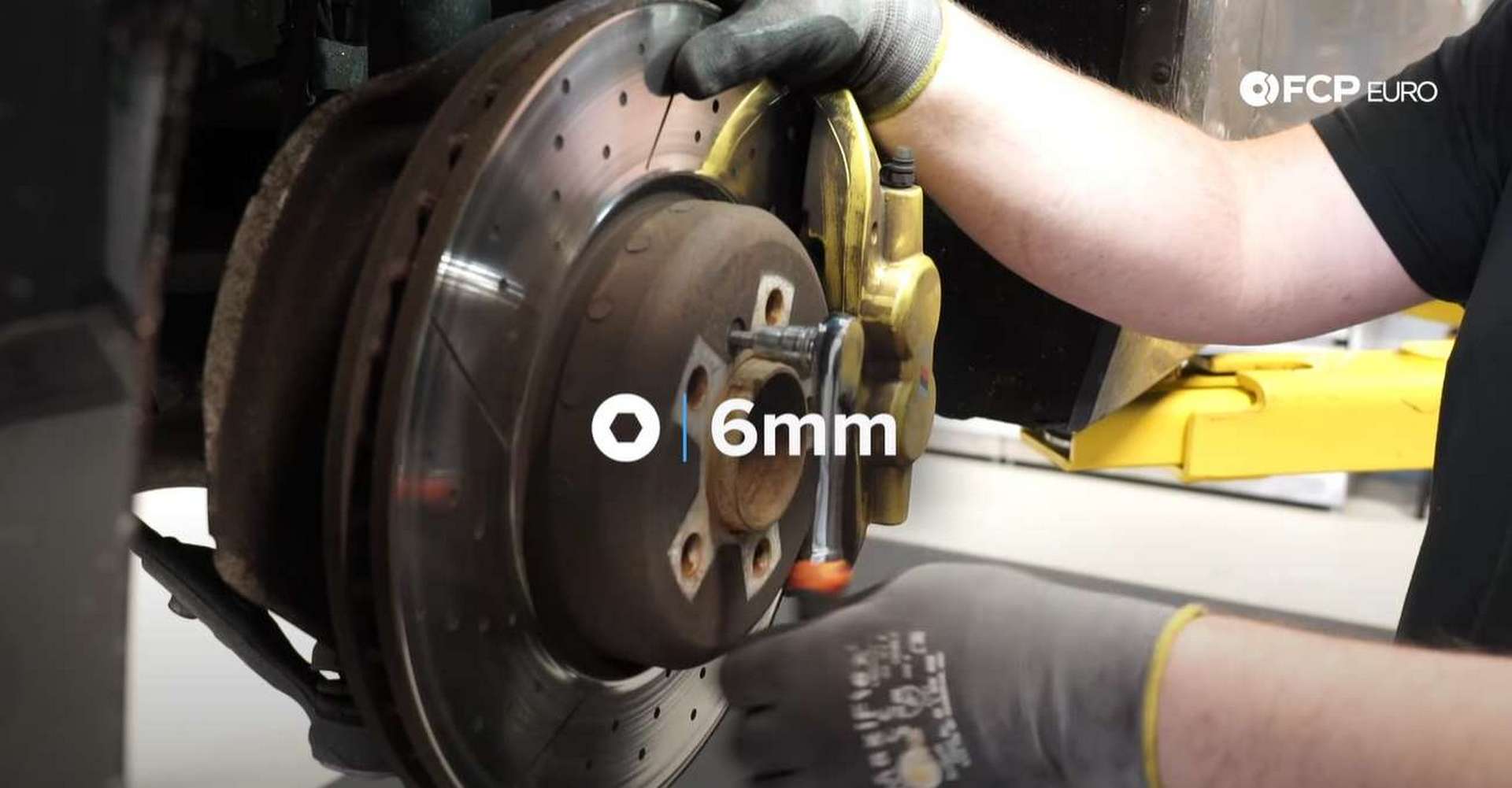
Use a 6mm hex bit socket to remove the set screw from the rotor. Ensure that the bit is fully inserted into the screw to prevent it from being stripped. Then, unlock the steering a turn the wheel to whichever side of the car you aren't working on to give yourself better access to the backside of the brakes.
![DIY BMW F30 M-Sport Brake Service punching out the pad pins]](https://images.contentstack.io/v3/assets/blta5fd5c563cb3dbc3/bltbbdcbf3bbad3f342/65cb5c7250b20b8572ff08c5/02-DIY-BMW-F30-MSport-Front-Brake-Job_Removing-The-Pads.jpg)
Two pins hold in the pads in these calipers. Use a punch and a hammer to knock the pins out partially, then use a pair of pliers to pull the pins out the rest of the way. Brake dust will have baked onto the pins, so they will be stubborn to remove.
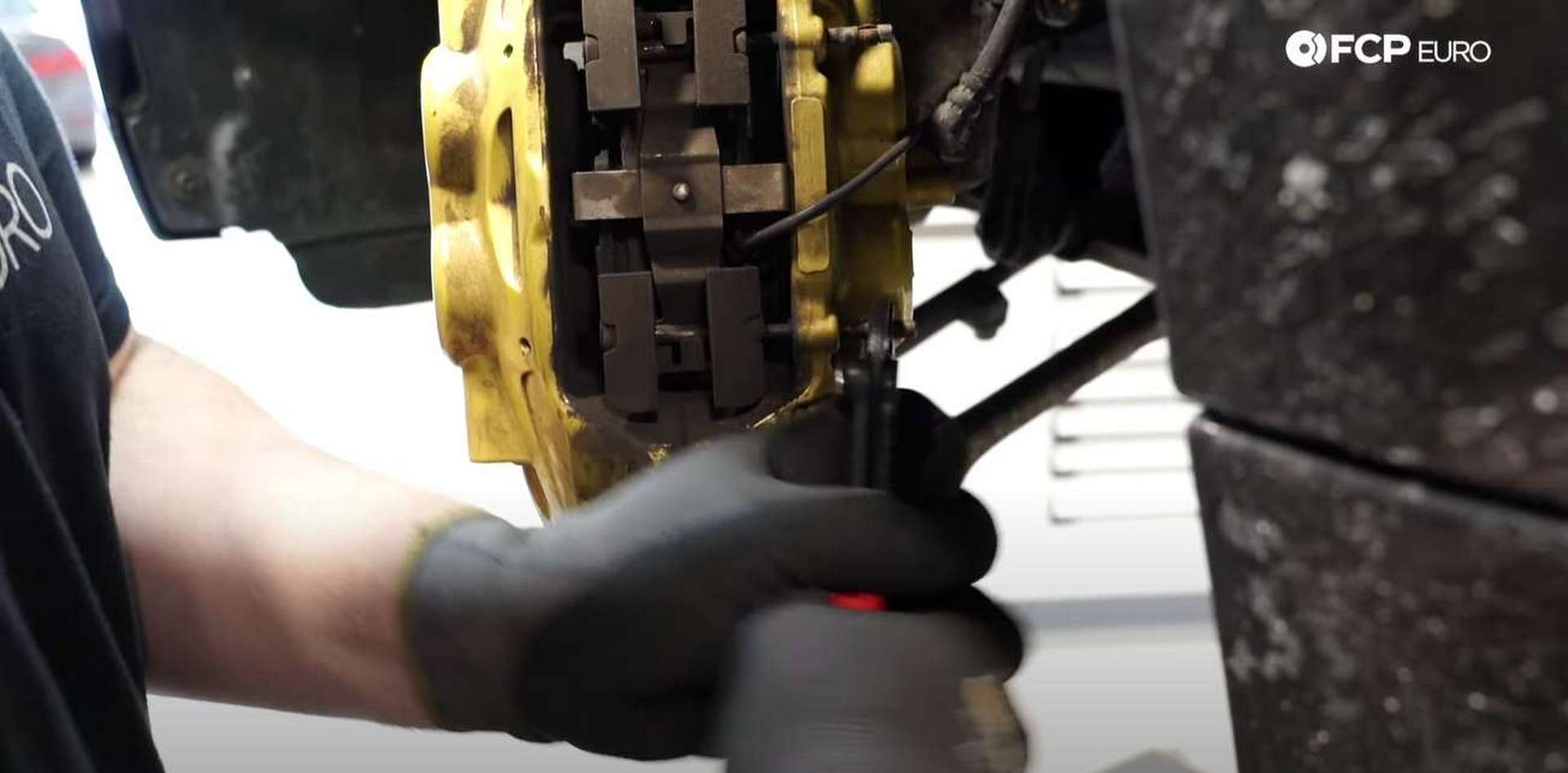
Depending on how worn your pads are, you may have to push the pads back to free the anti-rattle clip. Use a flathead screwdriver to push them back and then pull the clip out.

With the clip out of the way, pull the pads straight out of the caliper. Disconnect the pad wear sensor from the inner pad on the driver's side. Then, use the piston compressor tool to push the pistons back into the caliper.
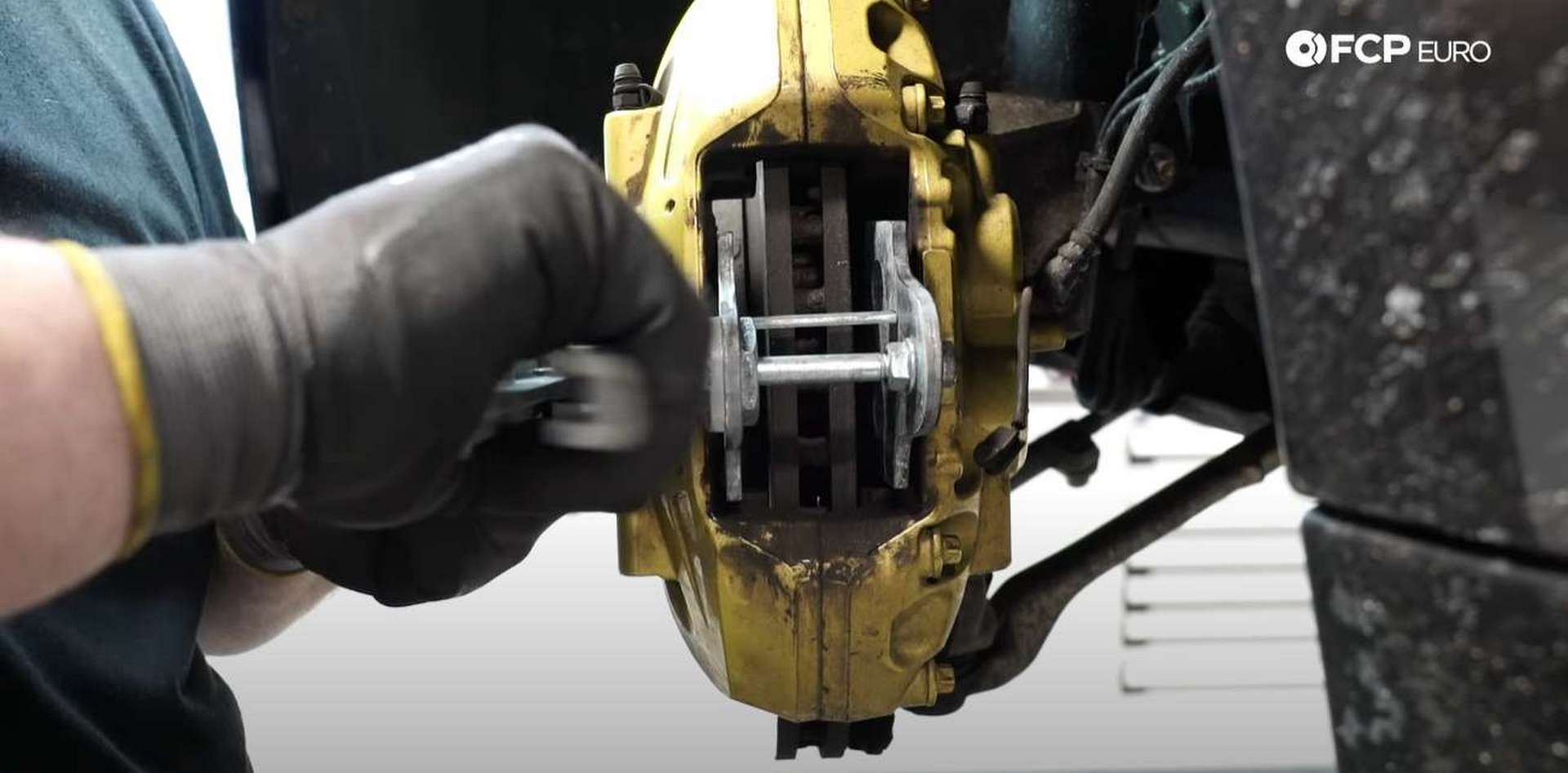
Pushing the pistons back into the caliper will give you the space required to install the new pads. Next, disconnect the old pad wear sensor from the car. Follow the sensor to the plastic box mounted in the wheel well. Then, disconnect the old pad wear sensor and replace it with a new one.
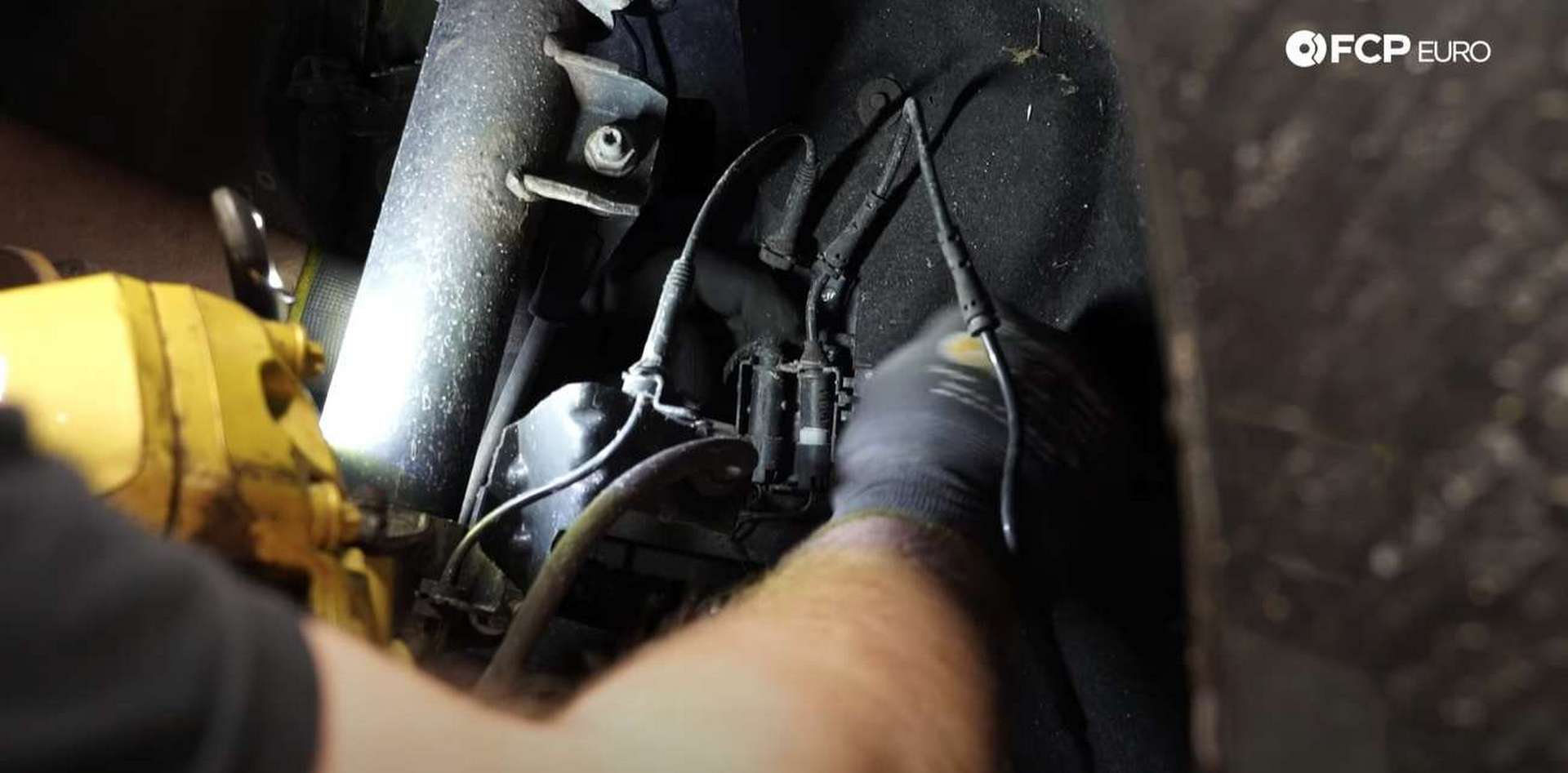
Step 2: Replace the rotor
Use an 18mm socket to remove the two caliper mounting bolts. Then, use a hook, bungee cords, zip-ties, or anything else to hang the caliper out of the way. Letting the caliper dangle by the rubber brake line will put undue stress on the line.

You can pull the rotor off with the caliper out of the way. However, there is a good chance that corrosion is present and is preventing the rotor from coming off. Hit the old rotor hat with a hammer to break it free of any corrosion.
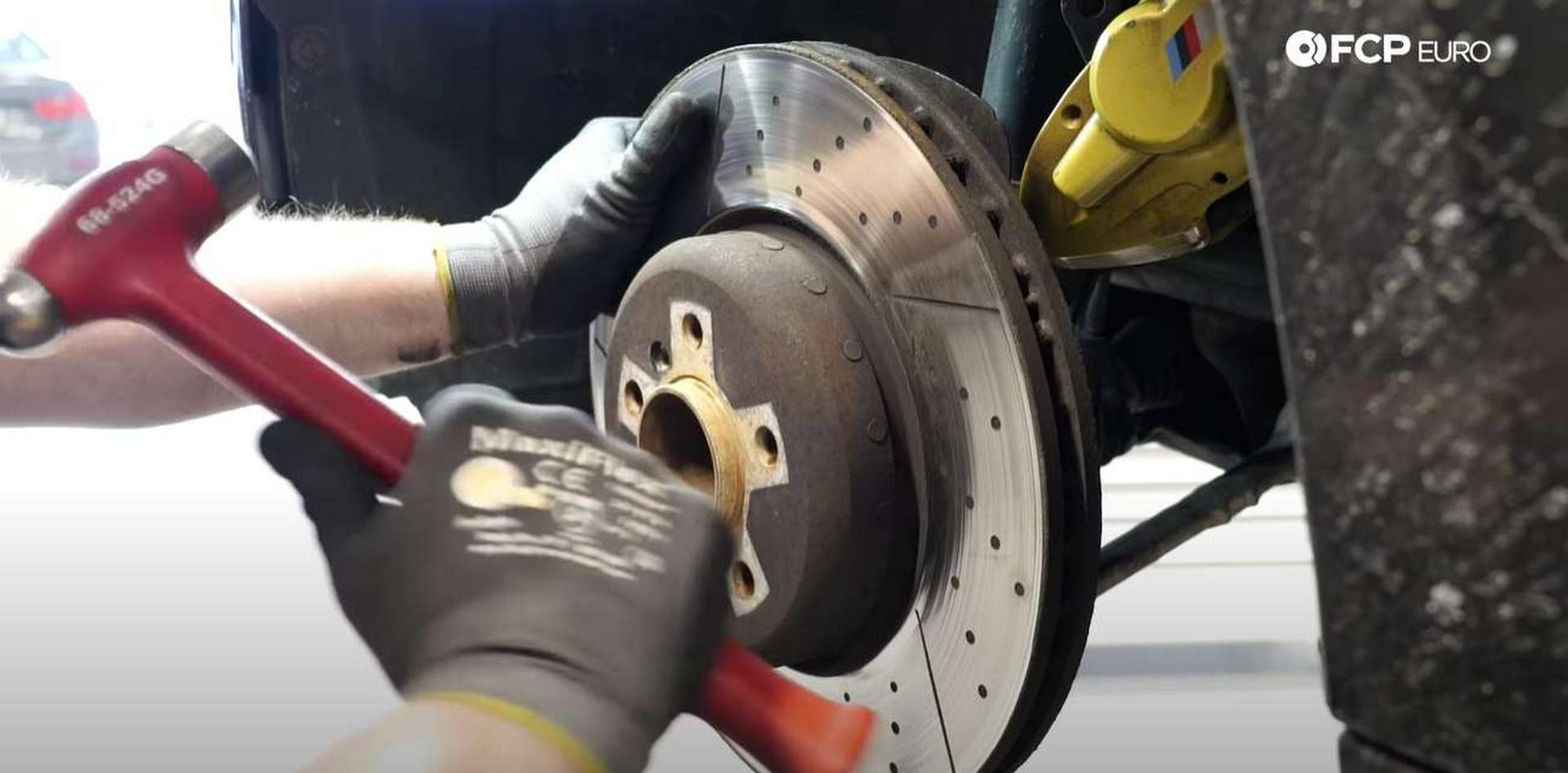
Use an abrasive disc or a steel-bristled brush to clean off any corrosion still present on the hub. After that, fit the new rotor to the hub. Thread in the set screw by hand before using a 6mm hex bit socket to tighten it.
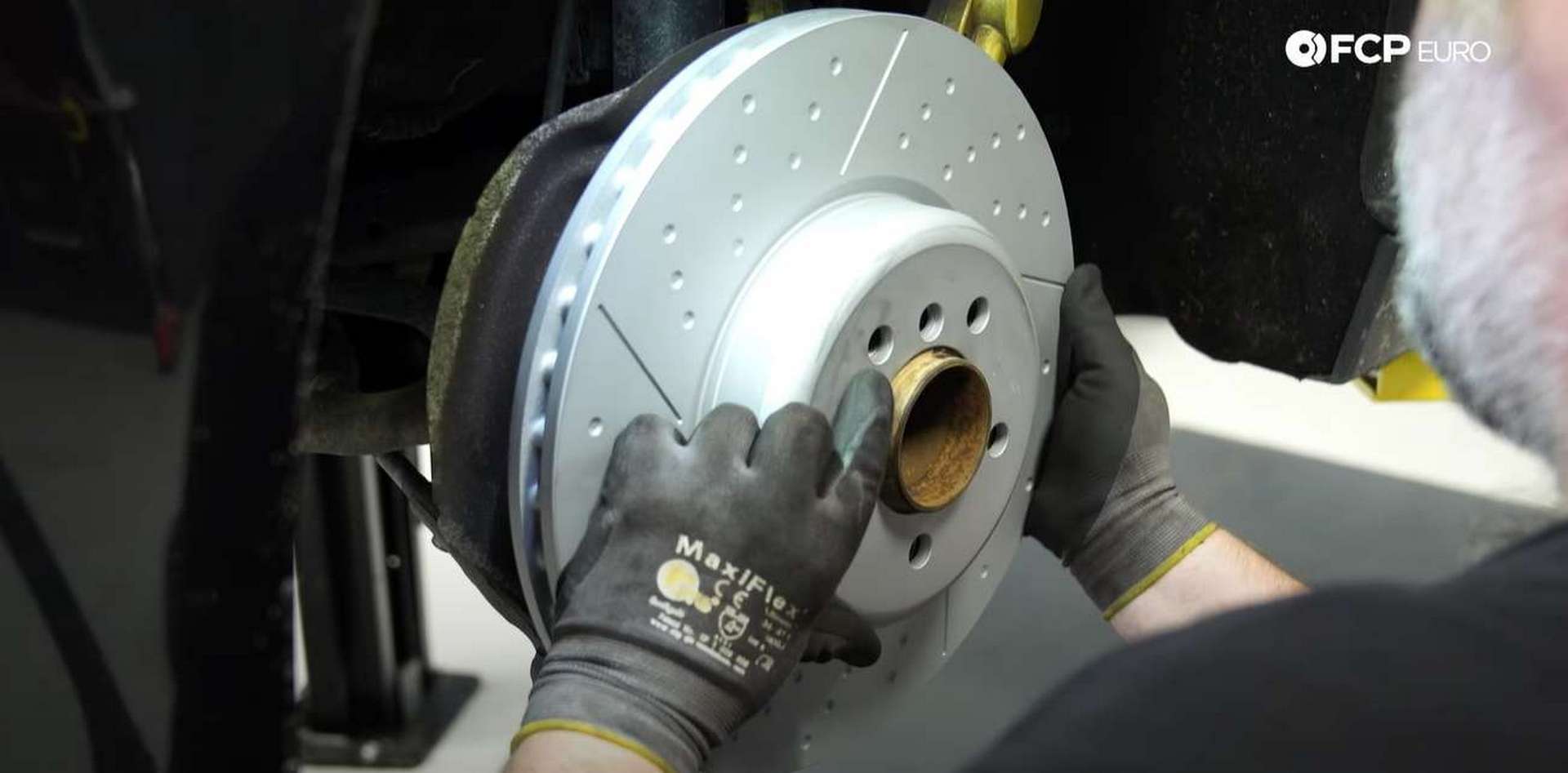
Then, refit the caliper to the knuckle. If you reuse the bolts, use the 18mm socket to tighten them. If you replace the bolts as BMW tells you to, the new bolts require an E16 socket. Either way, thread the bolts in by hand first to prevent any cross-threading of the caliper's threads. Then, torque them to 110Nm.
Step 3: Install the new pads
Slide the new pads into the caliper. Be patient as the new pads and rotor are at their thickest, so it will be a very tight fit.
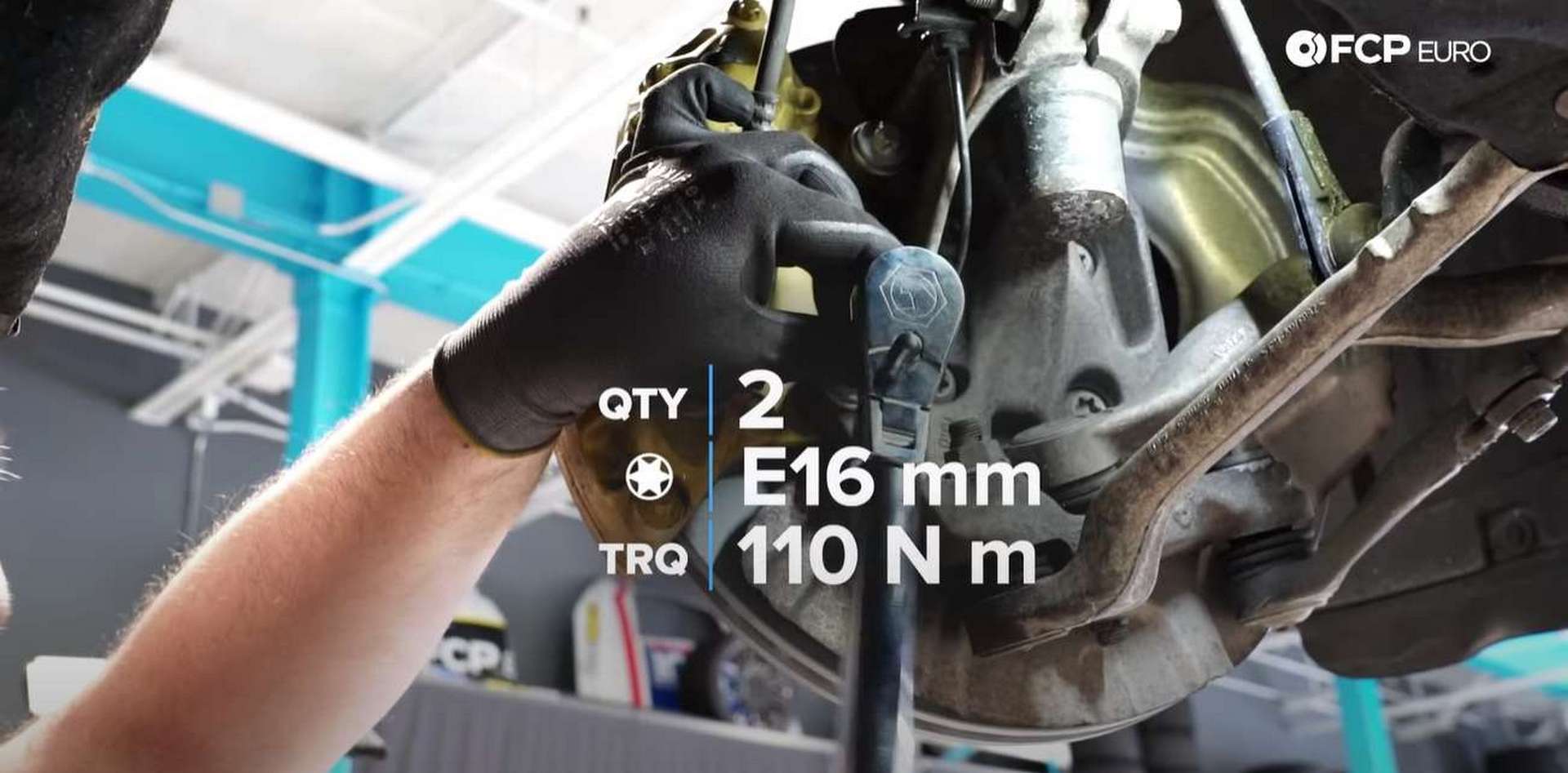
Connect the new pad wear sensor to the inner pad on the driver's side. Then, install the anti-rattle clip. Set the clip into position and install one of the pins. Then, push the other side of the clip down and slide in the other pin, locking the clip into place.
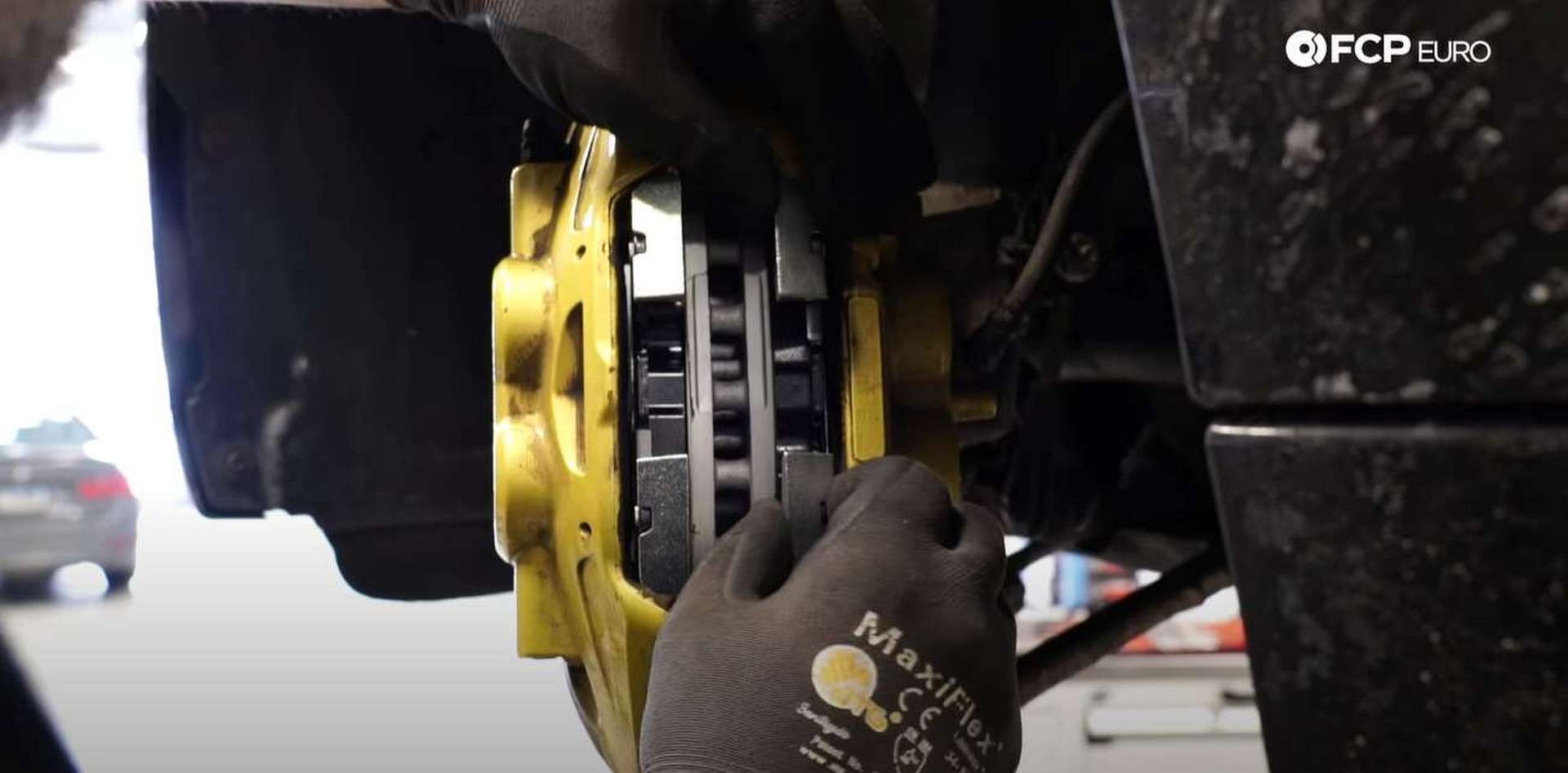
Use a hammer to tap the pins fully into place. Lastly, refit the wheels to the car and use a 17mm socket to drive in the lug bolts. Torque the lug bolts to 85 ft-lbs.
BMW F30 Front Brake Torque Specs:
- BMW Caliper Bolts = 110Nm or 81.1 ft-lbs, of torque
- BMW Lug Bolts = 115Nm or 85 ft-lbs, of torque
That's how you change the pads and rotors on your M-Sport brake-equipped BMW. If you don't know how to bleed the brakes but would like to, click here. If you're interested in more DIYs for your BMW, you can visit bmw.fcpeuro.com and subscribe to our YouTube channel.











